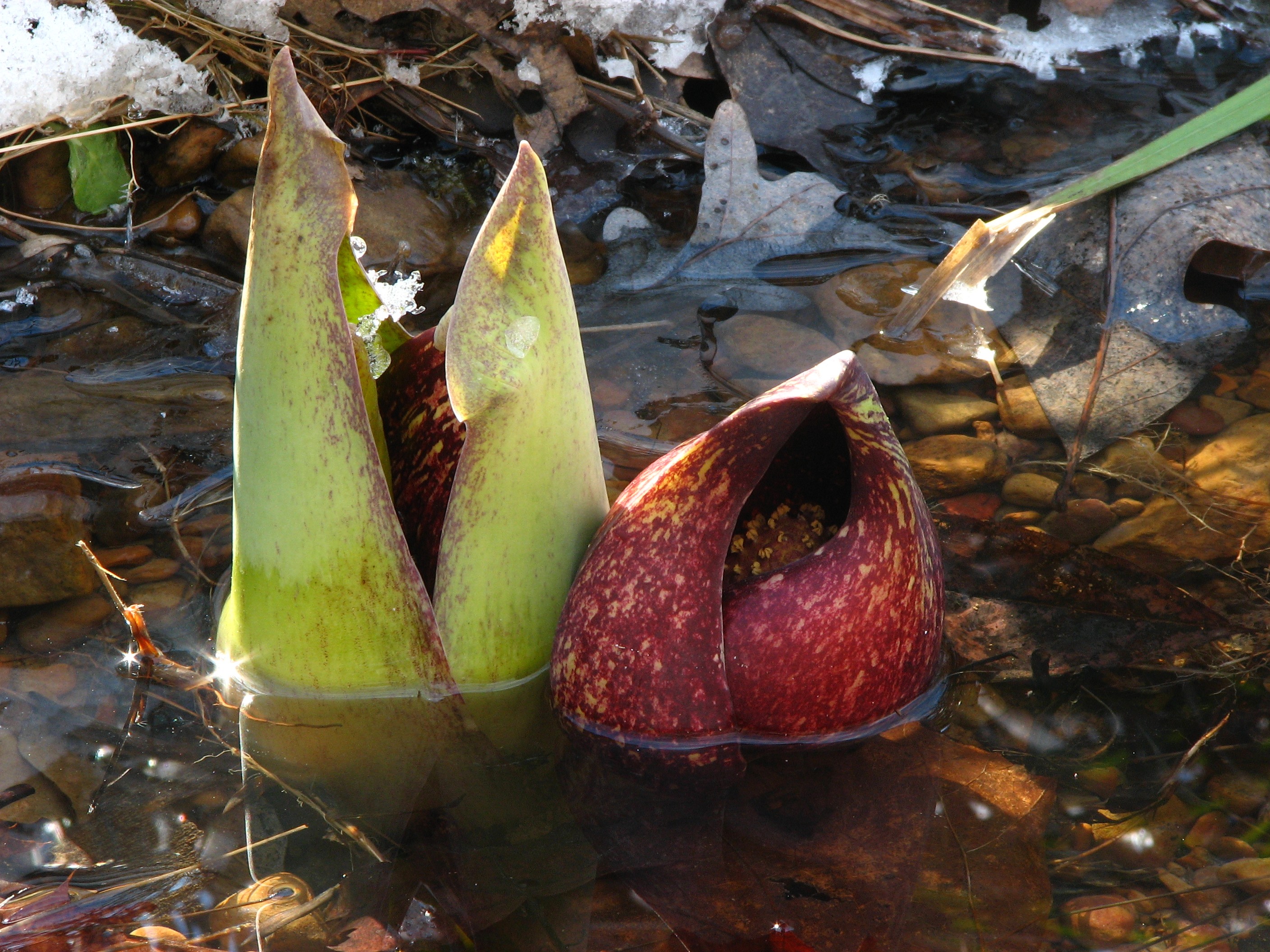Search for Resources
Spring Awakenings: Plants, Birds and Bugs
Late March 2024Top R4R Picks
Resources for extending the learning
-
Build a Bird and Bee BathElementary, Middle
-
Sweet DealElementary
-
Massive Migrations K-8Elementary, Middle
-
Bumble Bee WatchSecondary
-
Pollination PowerElementary, Middle
-
Fly Away Home!Elementary, Middle
-
Pulling for BiodiversityElementary, Middle
-
Nature's Partners - Pollination, Plants and YouElementary, Middle
-
-
Amphibial Pursuits FrogWatch Teachers’ GuideMiddle, Secondary
-
The Hidden Beauty of PollinationMiddle, Secondary
-
Sorting through SpringElementary
Reminder: Spring will officially arrive (Spring Equinox) on March 20th. Check here for the exact time of day in your area - The word equinox comes from Latin, meaning equal night – day and night will be 12 hours each. Still can’t quite get your head around it? This site gives a good overview of sun-earth geometry. Why not consider having a Spring Equinox celebration!
Featured Event: Plants Awake
We mentioned some stirrings earlier, but the spring flush (in a normal year) now begins in earnest:
- The first flower you notice will probably be yellow, as Coltsfoot, an introduced species, will bloom along lowland margins, followed by the native Marsh Marigold. Note, since Marsh Marigold is toxic and irritating when handled, and Coltsfoot is carcinogenic when consumed, consider limiting your interactions to viewing and photographing.
- Skunk Cabbage will also bloom along those margins, often melting away any late snowfall from around its flowers through a process called thermogenesis. These plants actually create heat to protect and support their early spring lifestyle, generating as much energy as a small rodent or hummingbird through a metabolic process more similar to animals’ than plants’. They can maintain a temperature of 1.7oC (35oF) when the surroundings are below freezing. Why go through all this? For the same reason most plants flower: to attract pollinators, only w
 ith heat instead of food. The name is appropriate, and the rather rank smell also attracts carrion eaters (flies and some bees) who, ever optimistic that food is at hand, will provide pollination. There is also some evidence that wind plays a role in pollination, so it may be covering all of its bases! A very detailed and somewhat lyrical description of the plant and its life cycle can be found here.
ith heat instead of food. The name is appropriate, and the rather rank smell also attracts carrion eaters (flies and some bees) who, ever optimistic that food is at hand, will provide pollination. There is also some evidence that wind plays a role in pollination, so it may be covering all of its bases! A very detailed and somewhat lyrical description of the plant and its life cycle can be found here. - Wild Leek is one of the first herbs to sprout new leaves in the spring, sometimes dusted by late snow on the forest floor. Like many spring forest plants, leeks use this opportunity of unobstructed sunlight to capture and store the sun’s energy in underground bulbs, which is used in early summer to flower and seed, and then maintain the plant until the sun returns next spring. And they’re tasty too, but keep sustainability in mind. Overharvest in Quebec threatened the species’ survival, causing the government to prohibit the sale of Wild Leek and limit personal take. If you are buying Wild Leeks or finding your own, make sure they are harvested legally and sustainably .
- Aspen and Speckled Alder catkins will be added to those of the willows, and those aromatic Balsam Poplar buds may be opening.
- Around the schoolyard, look for early growth from planted bulbs such as crocuses and snow drops, and ‘weeds’ like Birdseye Speedwell . Consider setting up a ‘first bloom’ calendar, with photos, and mark when each kind of plant or tree that you see first opens its buds, unfurls its leaves, or flowers. Keep it to compare to next year’s dates.
INVASIVE ALERT – Garlic Mustard
- While out exploring local habitats for spring flowers keep your eyes peeled for an early plant that is entirely unwelcome! Garlic Mustard is a very plain invasive species compared to other “show off” plants like Purple Loosestrife so it is often overlooked during the first year of its biennial life cycle. However, an early spring walk after a fresh dusting of snow is a great time of year to spot the low rosette of first year leaves which remain green throughout the winter. In its second year, Garlic Mustard will bloom with small white flowers that produce thousands of seeds. The characteristic garlic smell released by crushed leaves is also a good way to identify this plant and explains why it was brought to Canada as a cooking herb. Garlic Mustard is widespread in all but the prairie provinces, Newfoundland and Labrador, and the territories. It is considered to be one of the worst invasive plants affecting the biodiversity of forest habitats. It outcompetes native plants for light and nutrients and releases chemicals that prevent the growth of tree seedlings. Garlic Mustard usually first appears along forested roads and trails where humans have carried in seeds on clothing and vehicles. Therefore, you can help prevent the spread (scroll down) of this invasive species by carefully cleaning shoes, bikes and vehicle tires after you have visited an area where Garlic Mustard is known to occur. Canada has one of the highest percentages of forested land in the world so it is up to all of us to protect these vital ecosystems from invasive species like Garlic Mustard.

Other Happenings:
- Returning Tree Swallows may be found swooping low over open water (video). Since they are largely insect eaters, this means that aquatic insects may be beginning to rise and ‘hatch’ into their adult forms. Waves of different hatches will now occur until fall.
- The swallows are likely eating midges, several species of small, dark flies that look like mosquitoes with large, feathery antennae. Look for clouds of them hovering over trees, shrubs, or other objects near water. These are males. Females are attracted by the pitch of their wing vibrations, and the females’ pitch when flying into the swarm attracts the males. Mating ensues, often within seconds. I once knew a guy with perfect pitch who could mimic the sound of a female midge, and attract nearby male swarms! Go on a midge search (don’t worry – these particular midges don’t bite), and watch how these swarms dance on a light breeze. Aerial insectivores, like Tree Swallows, as a group (or more properly a guild) have been in alarming decline (scroll down to graph), and that decline has been ongoing until recently (scroll down). It is likely that changes to insect populations, whether it be population declines, altered time of hatch or spatial distribution, play a role. Time to pay better attention to insects and their predators!
- Help insects, especially pollinators
 , by becoming a Bee School! Commitments and actions can be found on the application form.
, by becoming a Bee School! Commitments and actions can be found on the application form. - A sugar bush late in the month is a good place to find spring insects that are attracted to the sweet sap. Bees, ladybugs, tortoiseshell butterflies (closed), flies and moths can all be found. In fact, when pails instead of lines of tubing are used to catch the sap, the presence of noctuid, or owlet, moths in the sap often marks the end of the sap run.
- Look for returning Turkey Vultures, American Woodcocks, Belted Kingfishers , Snow Geese and Sandhill Cranes (on their way through), Northern Flickers and Golden-crowned Kinglets (hard to see but you may hear their song, included on website), among many others. Departing are our friends the Snow Bunting, and any northern owls that might have still been hanging around.
- A shift from El Niño to La Niña will dominate spring weather across the country, leading to mostly above to some near normal temperatures with a fair sprinkling of turbulent weather. Precipitation will range from below to above normal in a patchy distribution. Does March go out like a lamb where you live?
 If the end of March is truly mild, you may begin to hear the first Western Chorus Frogs or Spring Peepers begin to call. They and other frogs and toads will really ramp up in April, and we’ll discuss them more then, but a search for frogs around lowlands on a balmy late March night can be a rite of spring (or a good excuse). Consider joining FrogWatch, and add to our information about these amphibians.
If the end of March is truly mild, you may begin to hear the first Western Chorus Frogs or Spring Peepers begin to call. They and other frogs and toads will really ramp up in April, and we’ll discuss them more then, but a search for frogs around lowlands on a balmy late March night can be a rite of spring (or a good excuse). Consider joining FrogWatch, and add to our information about these amphibians.- Wolves, Coyotes, Red Foxes and Gray Squirrels are beginning to give birth.

- Earth Hour (8:30-9:30 pm) will occur on Saturday, March 23rd. Join the global phenomena of lights being turned off in local communities around the world. Lights down, stars up – not only will you be helping fight biodiversity loss, but also migrating birds and star gazers.
- As we said before, the equinox occurs on the 20th. Get ready for the solar eclipse in April by catching this penumbral lunar eclipse, occurring over most of North America in the late evening of the 24th or after midnight on the 25th. Mercury will be at its highest point in the western sky after sunset on the 24th.
International Biodiversity Day
The IBD falls on May 22nd every year! We hope that you will consider holding an event, such as a bioblitz, related to the IBD. The WWF offers a toolkit that may be of use.

